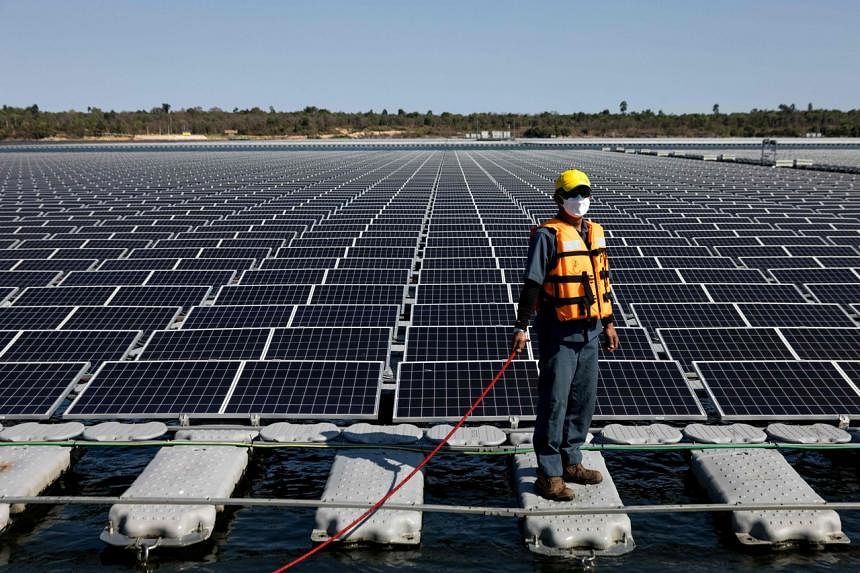SINGAPORE - Renewable energy, sustainable farming and electric vehicles (EVs) are among five key areas that can dramatically reduce South-east Asia's carbon emissions, a report has found.
Investment opportunities in these areas can account for 60 per cent of carbon emission reductions needed by the region to reach net zero by mid-century.
Other areas are forest conservation and having a sustainable built environment, such as by investing in energy-saving cooling technology.
The report by consultancy Bain and Company, investment firm Temasek and tech giant Microsoft was released at the Ecosperity conference on Tuesday (June 7).
For example, forest conservation, particularly in Indonesia and Malaysia, is the largest carbon abatement lever in the region, and will represent a US$20 billion (S$27.6 billion) investment opportunity by 2030.
Forests in the region can soak up huge amounts of carbon emissions, and projects such as mangrove planting and rainforest preservation are increasingly seen as key ways to fight climate change and also generate financial returns for investors through the sale of carbon credits.
Sustainable farming such as the use of precision agriculture and farmer service platforms, which entails the use of monitoring systems, irrigation technologies and drones, represents a large potential opportunity to drive yield improvements and reduce emissions.
Countries like Malaysia, Thailand and Vietnam are most attractive due to infrastructure readiness and strong regulatory support.
The report noted that smallholder farmers represent about 10 per cent of South-east Asia's overall carbon emissions, though sustainable farming can help to lower emissions by up to 40 per cent versus the emissions today.
On the other hand, renewables such as solar and wind energy represent a US$30 billion opportunity by 2030, of which solar energy accounts for US$20 billion.
The report noted that corporate investment in renewable energy solutions is accelerating in the region and accounted for at least US$6.6 billion in corporate green investment since 2020.
A total of US$15 billion in private investments has been made in South-east Asia since 2020, with approximately 45 per cent deployed in the last three quarters.
The region has around US$1 trillion in annual green economic opportunities by 2030.
Three "critical disconnects" that impede greater investment and climate action for South-east Asia include the lack of incentives to scale decarbonisation solutions quickly, insufficient focus on proven low-risk solutions, and the lack of clarity on system costs for energy transition.
In order to bridge the gap and boost green investment, the report identifies several key actions that have to be taken.
This involves unlocking opportunities in proven solutions, by adopting a more holistic decarbonisation programme and incentives to expand market access, strengthening green financing, confronting the system costs for renewable energy transition, and driving creative regional collaboration.
For example, to promote uptake, EVs in Malaysia will be exempted from road tax through to December 2025. Owners also benefit from EV charging income tax reliefs of up to RM2,500 (S$780).
The report notes that green hydrogen and carbon capture and utilisation technologies hold high carbon removal potential, but it will take time to reach tech maturity and commercial readiness.
Likewise, the protection of peatlands - which are one of humanity's allies in the fight against climate change with their role as a natural carbon sink - has great carbon abatement potential, though this would be limited to Malaysia and Indonesia, which represent a large proportion of the world's peatlands.
Mr Dale Hardcastle, partner and director of the Global Sustainability Innovation Centre at Bain & Company, said South-east Asia "needs to move from promises to action and bridging the gap between opportunities and results will be a key milestone".
"We remain bullish on the US$1 trillion economic opportunities in South-east Asia, but we need to step up as a region to strengthen the investable market and increase green capital flows."


